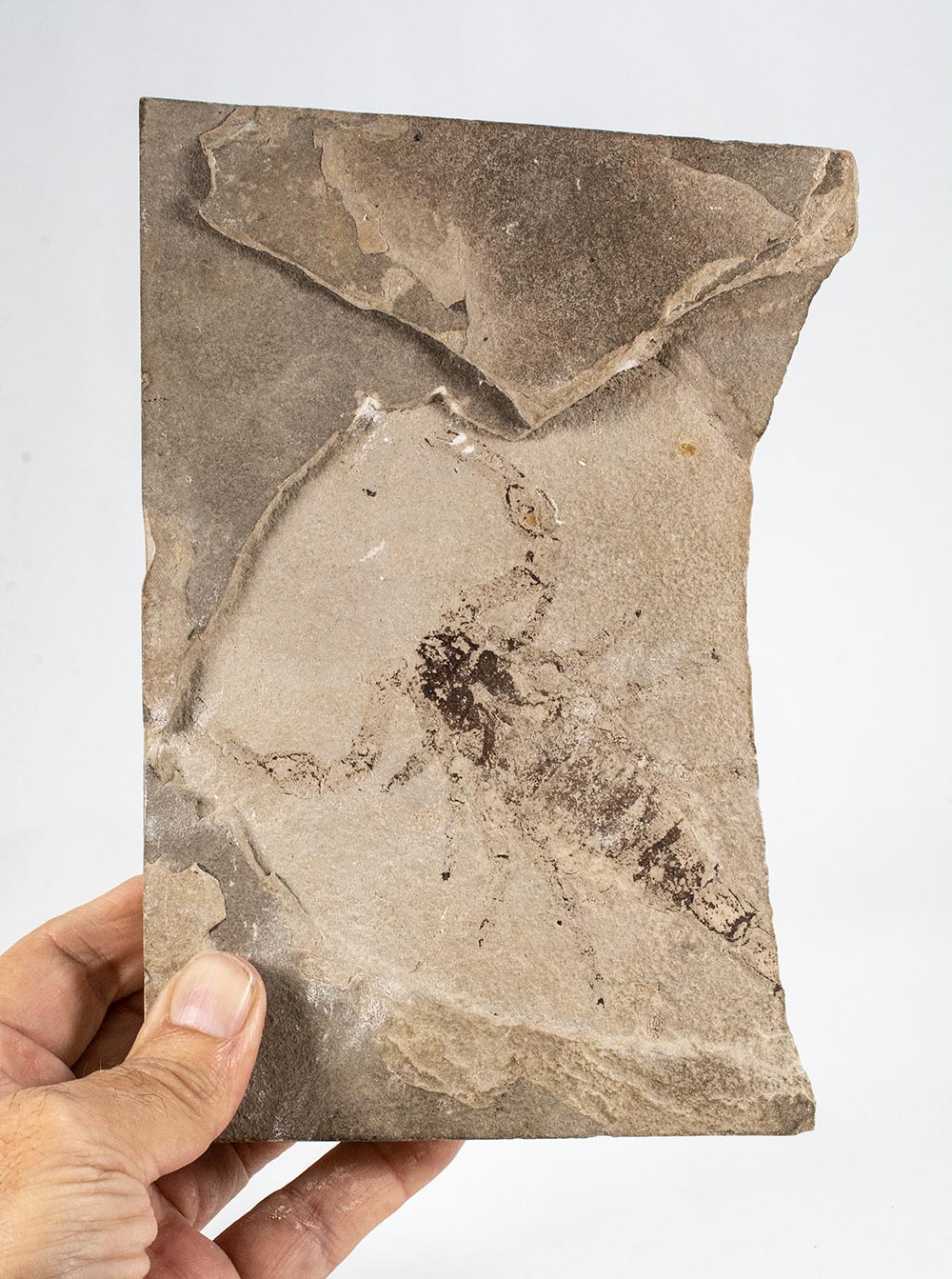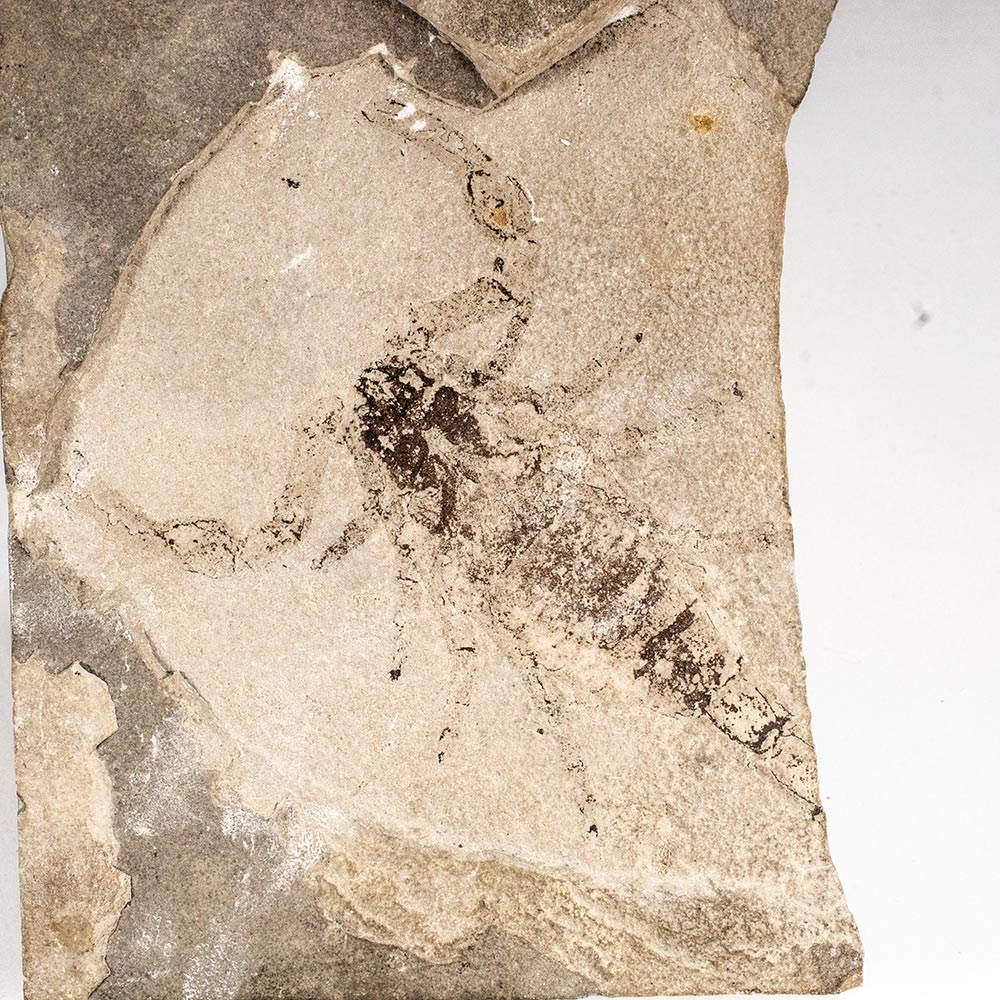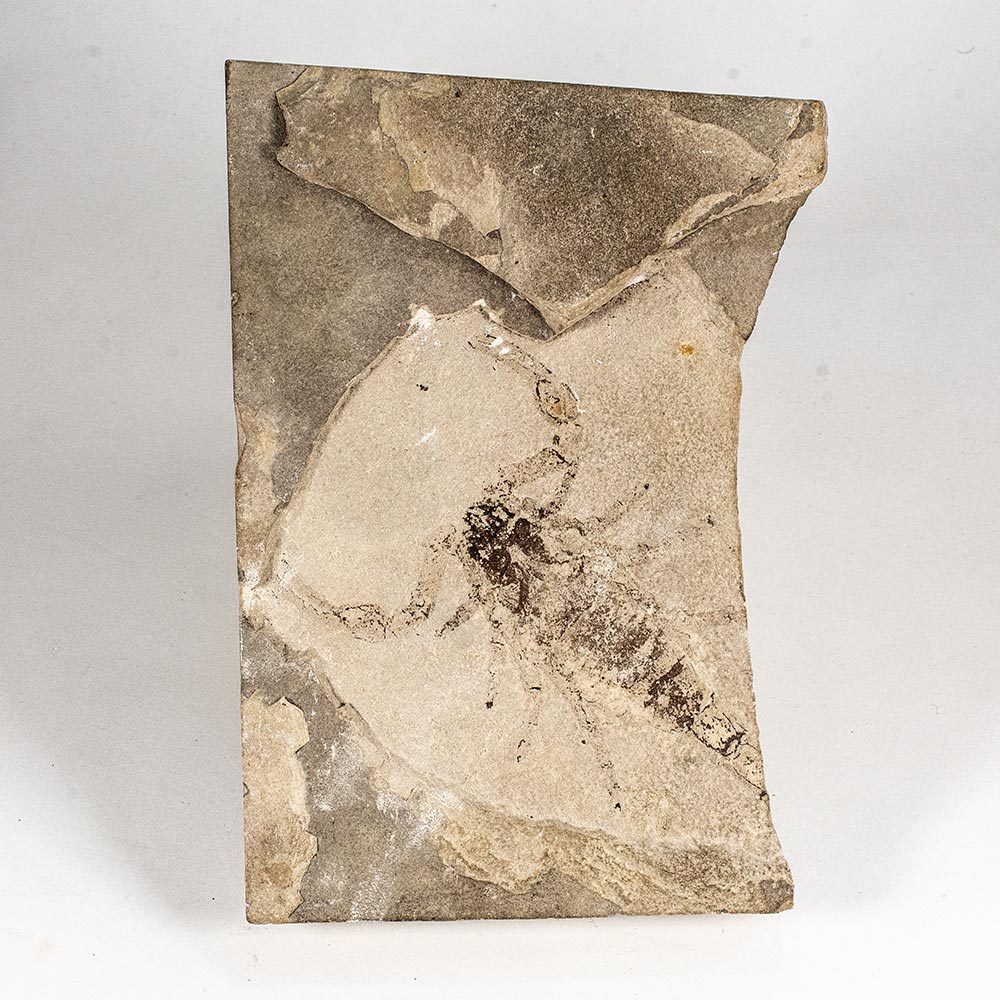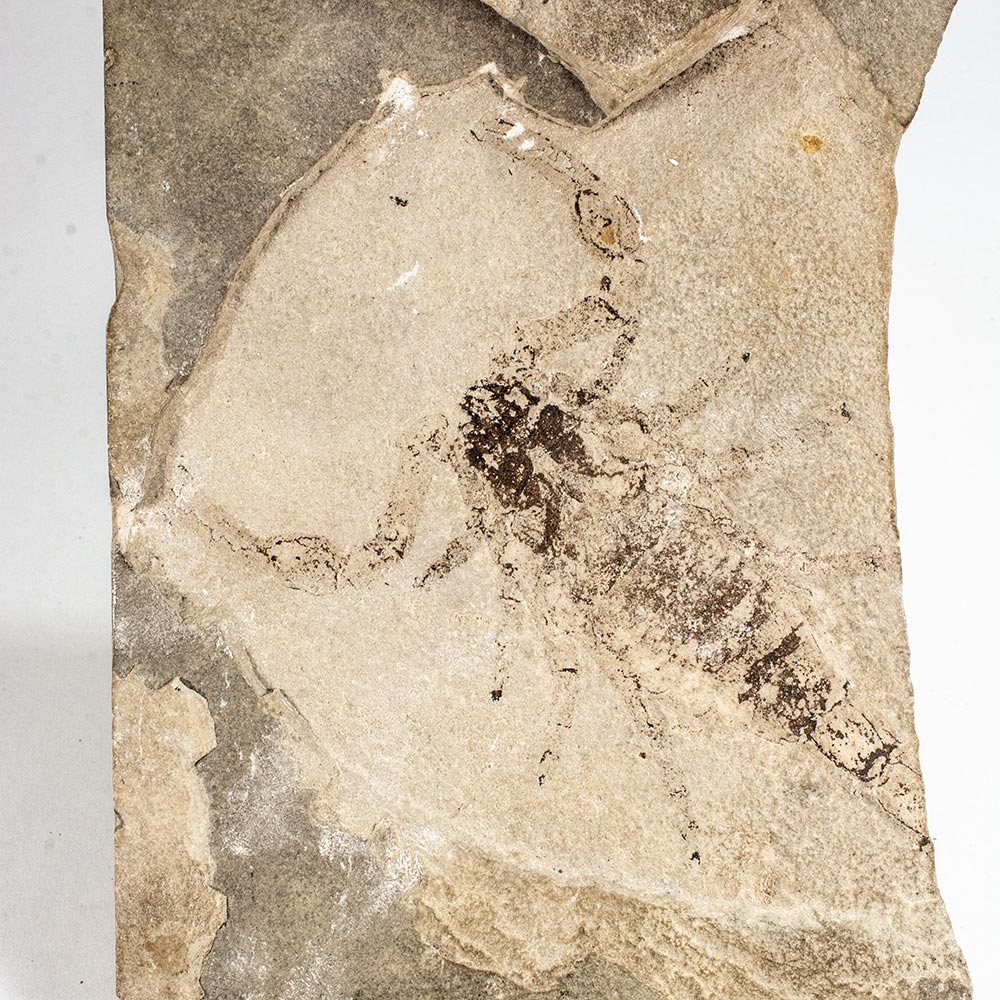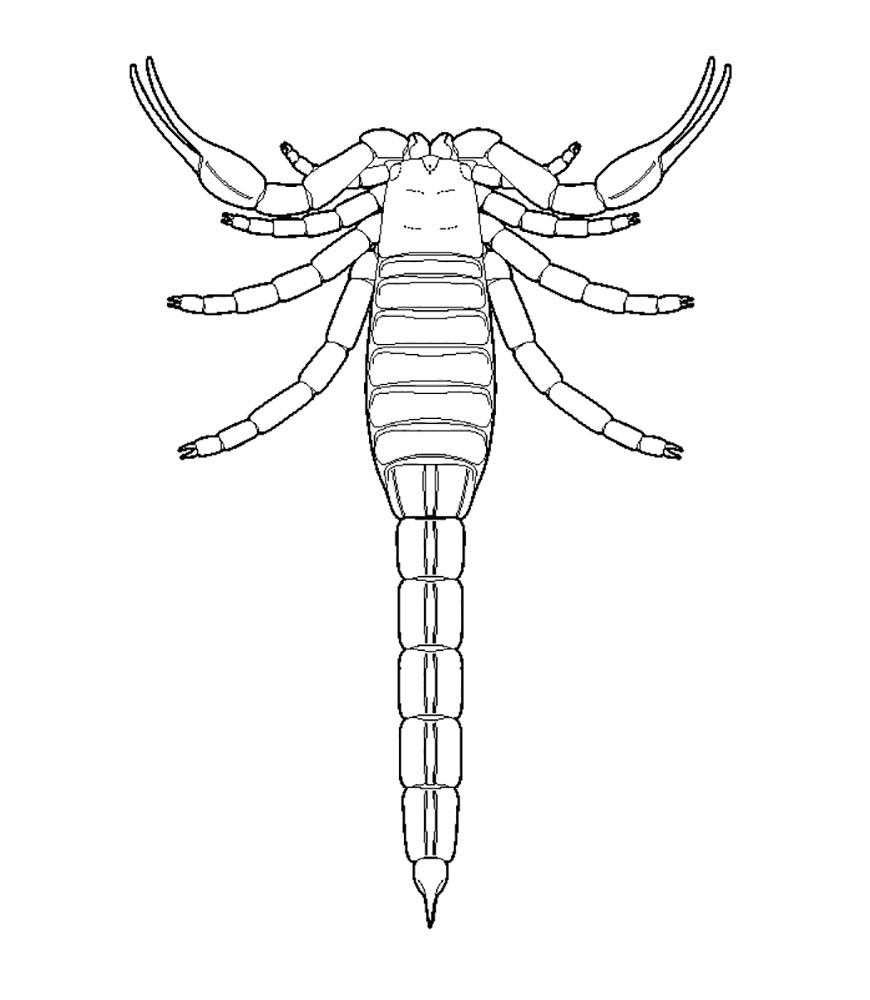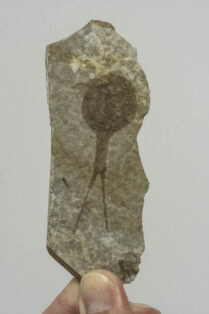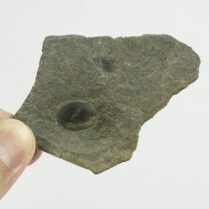Description
Eramoscorpius brucensis
Middle Silurian
Lockport Formation, Eramosa Member
Bruce Peninsula, Ontario, Canada
Huge 109mm (4.3 inch) scorpion on 212mm (8.3 inch) slab. Incredibly rare and the biggest one we have ever seen.
Eramoscorpius is an extinct genus of ancient scorpions that lived approximately 430 million years ago during the Silurian period. Fossils of this genus, particularly this species, Eramoscorpius brucensis, have provided significant insights into the early evolution of scorpions and their transition from aquatic to terrestrial environments.
The most notable specimens of Eramoscorpius brucensis were discovered in the Eramosa Formation in Ontario, Canada. These fossils are among the oldest known scorpions and are remarkable for their well-preserved state, allowing detailed studies of their anatomy
One of the key features of Eramoscorpius is the structure of its legs. Unlike earlier scorpions, which had legs adapted primarily for swimming, Eramoscorpius possessed legs ending in short, sturdy feet. This anatomical adaptation suggests that these scorpions could support their own weight and potentially walk on land, indicating an early step in the evolution of terrestrial scorpions
While primarily aquatic, the ability to venture onto land, even briefly, would have provided Eramoscorpius with ecological advantages, such as avoiding predators during vulnerable periods like molting. The presence of ripple marks in the fossilized sediment indicates that these scorpions lived in environments subject to occasional exposure, further supporting the idea of their semi-aquatic lifestyle.
To read the scientific journal article describing this species (PDF) see: https://royalsocietypublishing.org/doi/full/10.1098/rsbl.2014.0815

